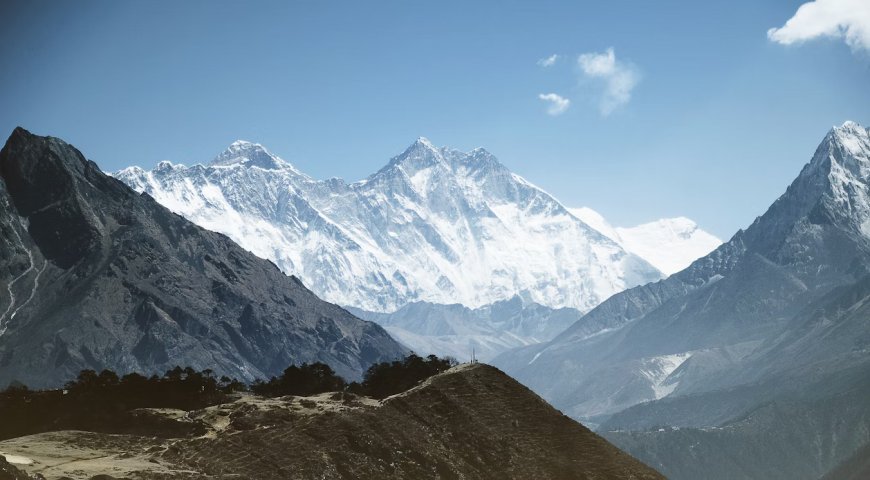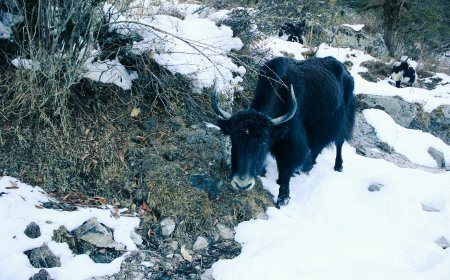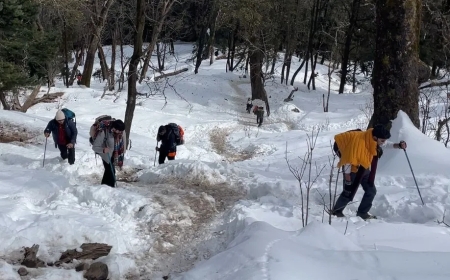What Does It Really Take to Climb Everest?
The Dream That Started It All
Have you ever looked at a photo of Mount Everest and thought, What would it feel like to stand up there? I did over and over again.For years, I dreamed about Everest. The highest point on Earth. A place where the sky touches the mountains and the mountains touch the stars.Finally, I stopped dreaming and started training. Thats when my Everest expedition began not just a climb, but a journey of body, mind, and spirit.

Where It All Begins
The journey starts in Kathmandu, Nepal. After meeting our guides and checking our gear, we flew to Lukla, a small mountain town with one of the most famous airstrips in the world.From there, we hiked for nearly 10 days to reach Everest Base Camp (5,364m). Along the way, we passed through Namche Bazaar, crossed hanging bridges, and walked beside deep rivers and tall cliffs. Each step took us closer to the mountain and higher into the sky.
Key Stats of the Everest Expedition
Here are the basic facts most climbers face:
-
Duration: Around 6065 days total
-
Trek to Base Camp: 910 days
-
Maximum elevation: 8,848.86 meters (29,031 feet)
-
Base Camp altitude: 5,364 meters
-
Best seasons: Spring (AprilMay) and Autumn (SeptNov)
-
Fitness level: Highplus experience at high altitude
The climb takes weeks because your body needs time to acclimatizeto adjust to less oxygen as you go higher.
The Climb Above Base Camp
Once we reached base camp, we didnt just head to the summit. First came training and rotation climbs. We went up to Camp 1, Camp 2, and even Camp 3, then back down to rest. These climbs helped our bodies prepare for the thin air near the summit.
Each camp is like its own world:
-
Camp 1 (6,065m): A flat, icy valley
-
Camp 2 (6,500m): Tucked below the towering Lhotse Face
-
Camp 3 (7,200m): Perched halfway up that icy wall
-
Camp 4 (7,950m): The final stop before the top, known as the "Death Zone"
Up there, even breathing feels hard. Every step is slow. Every choice matters.
The Summit Push: One Night to the Top
After nearly two months of climbing and waiting for good weather, our summit window came.We left Camp 4 in the middle of the night, climbing by headlamp. The air was freezing, the wind sharp. At that altitude, your body is slowly shutting down so you must move quickly but carefully.I remember counting my breaths: step, breathe, step, breathe. I remember looking up and seeing stars above and the dim line of snow beneath my feet.And thesunrise.We reached the summit of Everest just after 5 a.m. The sky turned orange. The earth below turned blue. We stood on top of the world.
How It Feels to Stand on Everest
Its hard to explain what it feels like. I cried. I smiled. I felt small and strong at the same time.Up there, nothing else matters. Not the emails, the worries, or the noise of life. Just silence. Just the wind. Just you and the mountains.But you cant stay long. We took our photos, hugged our team, and began the long, hard descent.
What I Learned on the Mountain
Climbing Everest taught me more than I expected. Yes, it was about strength, training, and bravery. But it was also about teamwork, patience, and humility.Some days, I felt powerful. Other days, I wanted to give up. But every challenge reminded me: big goals take time, risk, and heart.
So, What Does It Really Take to Climb Everest?
It takes:
-
Months of training
-
A strong and trusted team
-
The courage to keep going when its hard
-
The wisdom to stop if its not safe
-
And the love for mountains that goes beyond the summit
If you ever dream of Everest, know this: it's not just about the top. Its about who you become on the way there.



































